Whether it’s a large enterprise or a small start-up, a crisis can adversely affect a brand at any time. Nothing worse than your customers not wanting to purchase anything from your brand after witnessing your negative online reputation or your brand’s involvement in a social media scandal. Fortunately, you can effectively deal with an online reputation crisis and mitigate negative effects.
An unfortunate mistake, an unexpected backlash, or a social media mishap – anything can significantly damage your company’s image online. A study by Hubspot has revealed that 90% of consumers are not likely to purchase from a brand with a negative online reputation.
Effective management of reputation crises can help you reveal the true story to your audience, overcome the situation, and emerge stronger.
Let’s explore the practical steps to handle an online brand reputation crisis and protect your digital image. Trust in the process – with a strategic approach, you can transform your toughest situations into meaningful opportunities to improve your business reputation online.
What is an Online Reputation Crisis?
It’s a difficult situation for any brand when the opinion of the online users turns against it, which starts to damage their business reputation. In simple words, it’s a situation when a business’s online image, public trust, and stakeholder relationship are negatively affected by online users’ opinions.
It’s not always something big. Rather, it can be some unresolved issue that gradually builds into something noticeable and damaging. Even a little mistake of yours can provoke a massive circulation of negative information online, negative comments on social media, and extreme criticism of the company.
And let us tell you, these are some major crises you can face as a business owner!
What matters in such situations? It’s how a business manages its online image when a crisis strikes. It can completely make or break its future.
How Does a Reputation Crisis Start?
It’s not necessarily triggered by something big always. You may be surprised to know that a massive reputation crisis can start with just –
- A viral social media post
- A negative tweet that spread like wildfire overnight
- A data breach that exposed vital customer information
- A sudden wave of fake reviews
- Poor customer service or product mishaps
These types of incidents happen, and suddenly your brand name is everywhere online for the wrong reasons. Sounds scary, right?
To avoid such situations or handle them like a PRO, you need to excel in online reputation crisis management. Negative things about your business can be circulated online within seconds, but what you can do is prevent the damage and rebuild your customer trust.
Why is Reputation Crisis Management Important?
A crisis often occurs due to a negative event, action, or decision that generates a lot of public attention and receives extreme criticism on the internet. And once it hits, the impact is quite REAL!
- You may lose revenue.
- The press can circulate negative articles about your business.
- You may have to deal with angry or dissatisfied customers.
- Your local search map may lose ratings.
- Your sales may drop by a huge number.
- The most significant one – your brand reputation, can be severely damaged.
In today’s digital world, people instantly share their opinions, reviews, and feedback online. The rapid exchange of information has increased the need for effective reputation crisis management strategies. Your brand reputation is not just about your public image; it’s a reflection of your business’s values, ethics, and reliability.
And when a crisis occurs, your business reputation is put to the test.
Did you know that 95% of consumers read online reviews before they purchase anything from a business? This statistic shows the importance of maintaining a positive online reputation and managing reputation crises to rebuild consumer trust. Hiring an online reputation repair agency is one of the best ideas to manage such reputational crises online.
How to Recover from a Reputation Crisis and Rebuild Your Brand?
When a crisis hits a business, all you need is a solid strategy to manage an online reputational crisis. So here we are, providing a roadmap to take control of such situations and handle them like a leader.
Our proven strategies will help you guide your customers through the chaos and prevent the damage such crises can cause to your online brand reputation.
10 Major Steps to Manage the Brand Reputation Crisis
The following are 10 major steps to efficiently manage the reputation crisis of a business. You can follow these steps to rebuild your brand position in the market.
Step 1: Develop a Crisis Communication Plan

The first step is to PLAN.
It may seem simple, but it’s not in reality! There will be no time to figure things out when a negative situation occurs related to your business. Planning to increase the online brand awareness and manage the crisis, ensure the success of a crisis management strategy.
Hope that you never need it, but when you do, prior planning to decide a strategic approach can save your business.
Why do you need a solid plan?
During a crisis, people tend to panic and take missteps. A clear plan made in [previous with a calm mind can help your team act confidently and ensure swift action. It also shows your customers and other stakeholders that you still have control over your business even in a crisis.
How to Create a Solid Reputation Crisis Management Plan?
Follow these steps to create an effective reputation crisis management plan to protect your business.
- Identify Crisis Scenarios – Brainstorm the types of crises your business can experience in the future, such as product issues, PR mishaps, or social media trolling.
- Decide Who Will Communicate – Set up a clear communication protocol for your internal team to run it smoothly, even in unfortunate situations. You must decide who will draft and approve the message or how updates will be shared during a crisis.
- Choose Your Brand’s Spokesperson – Do all your team members speak for your brand online? If yes, then it may create chaos and escalate the crisis further. Choose a few of them who are comfortable making public statements. You can also train your team to deliver clear and professional messages to the public.
- Create Templates – You can draft templates for common crisis scenarios in advance and save time.
- Keep Contacts Accessible – Make a list of your stakeholders’ (employees, media persons, business partners, and customers) contact information that you may need during a crisis.
- Select Your Channels – Choose an online platform where you’ll share updates about your business, like social media, your website, or email.
Step 2: Assess the Severity of Crisis

How much damage does the reputational crisis do to your business?
If you don’t have a clear idea about it, it’s a problem. You must assess the situation first and start managing the crisis with clarity.
What do you need to do to assess a crisis?
- Find the source of the crisis – is it a negative review, social media post, viral tweet, or data breach that has caused the crisis?
- How far has the damage spread? Is it trending on social media? Have your local and national consumers already been aware of your reputational crisis? It’s crucial to have answers to these queries.
- You can use a sentiment analysis tool like Mention to track how people are reacting to the negative reputation of your brand. What words are they using to share their opinions on the issues?
The faster you figure out the situation, the more confidently you can develop the strategy to mitigate the damage to your online reputation crisis.
Step 3: Respond Promptly and Authentically
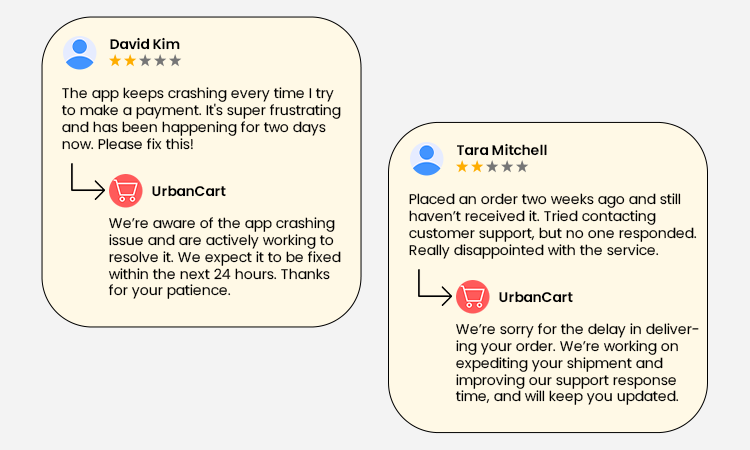
Struggling with a low online reputation score? It may be a sign of your brand’s reputational crisis. If you don’t respond to such a crisis authentically, it can escalate further and allow misinformation to spread.
According to a 2024 study conducted by Gominga, 53% of consumers want a response to their negative review within a week of it being posted. Thus, prompt response is essential, especially during a crisis.
- You must acknowledge the issue within 24 hours. Acting quickly shows your customers that you have taken the issue seriously and will do every possible to resolve it at the earliest.
- While responding, try to avoid generic statements. Your honesty in addressing a crisis says a lot about your brand value.
- Assign different roles to different people in your team – Who will handle the media? Who will reply to the online reviews? Who will share updates on social media?
How to Respond to the Crisis Promptly?
As soon as you’ve identified the crisis, you need to release an official statement to acknowledge the situation. You must provide all the details and convey the message that you’re addressing the issue and will provide further updates.
- If the mistake is on your end, you must admit it. Avoid being defensive or making excuses, as it can ruin your customer trust.
- Always show empathy and address the emotional impact on your audience. It’s important to show that you care.
- Be honest about your flaws – you should admit if you don’t have any specific information or have failed to gather it till now.
Example Response to Your Audience
Here is a sample:
“We’re aware of [specific issue] and deeply regret the inconvenience caused. Our team is actively working to resolve it and ensure it doesn’t happen in the future. We’ll share every possible update as soon as we have more information.”
“We’re aware of [the problem] and are actively working to resolve it. We expect [timeframe needed to resolve the issue]. Thanks for your patience.”
“We’re sorry for [specific issue]. We’re working on [specific solution] and will keep you updated.”
Step 4: Communicate Effectively across Channels
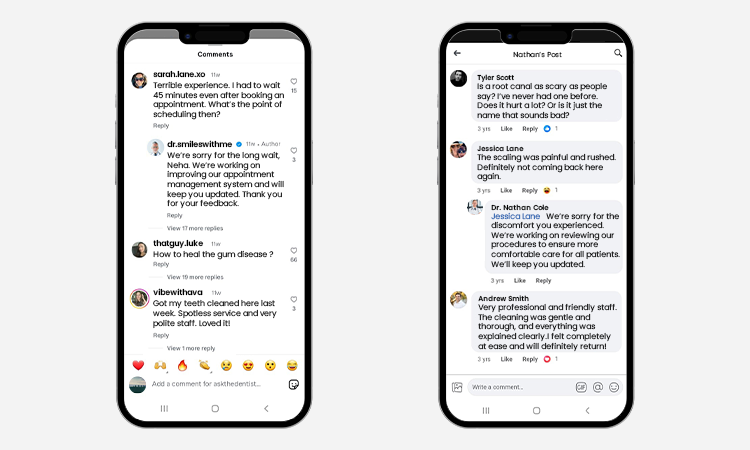
Teamwork is everything when it comes to handling a crisis. Everyone in your team must be aligned to maintain clear communication across channels.
It’s not a good idea to stay quiet during a crisis. It may show that your brand is at fault even if it’s not. You need to prepare a press release or a public statement. Another option is to directly speak to your social media audience, or you can also communicate with the public through email and review sites.
Every online platform has its own advantages when it comes to clear communication. The thing you can do is to communicate across every channel and use the highest potential of them.
Step 5: Monitor Public Sentiment
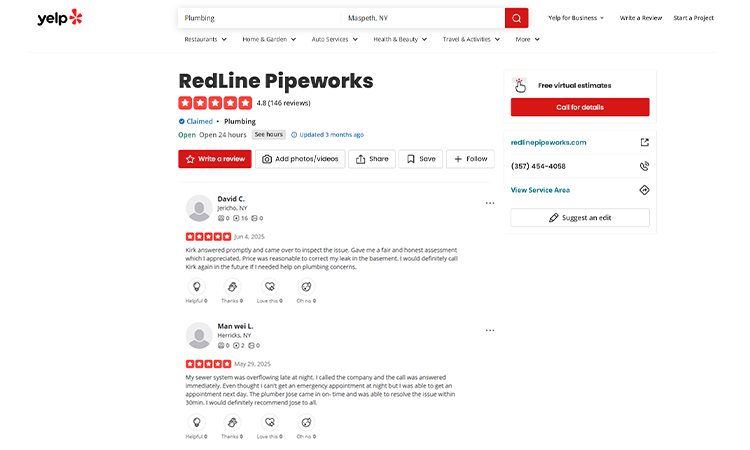
What are people saying about your brand after it is hit by a reputational crisis?
Once you’ve got the answer to this question, you can figure out how you can resolve the issue. No matter if you’re a new entrepreneur or the owner of a market-leading company, analyzing public sentiment is crucial to ensure the long-term success of your brand.
How to Monitor Public Sentiment?
Follow the steps to track public sentiment about your business.
- You can use tools like Mention and Brand24 that allow you to analyze the public sentiment regarding your business.
- Track your brand mentions, keywords, and relevant hashtags across popular social media platforms.
- You need to monitor the online reviews you’ve received through Google, Yelp, Amazon, and more.
- Conduct a survey to directly ask questions to your audience about their opinions.
- You can also analyze transcripts of customer calls, chats, and emails. Additionally, tracking news articles, forum discussions, and blogs can help you understand what people are saying about your brand.
How to Analyze the Public Sentiment?
Here are some ways through which you can effortlessly analyze public sentiment.
- Firstly, you need to segment the sentiment expressed by the public online – are they positive, negative, or neutral?
- Try to identify the audience’s emotions and themes. You can use AI-powered tools to boost your sentiment analysis efforts.
- You can follow the public sentiment trends and try to identify any shifts in public opinion online.
What to Monitor in the Sentiment?
Here’s what you need to keep an eye on while tracking public sentiment.
- Crisis keywords like ‘your brand name and issue’ or ‘your brand name or controversy’.
- Common misspellings or hashtags of your brand
- Mood of the reviewer – are they angry/frustrated/sympathetic?
- Is it a rumour or a new narrative?
Step 6: Address the Root Cause
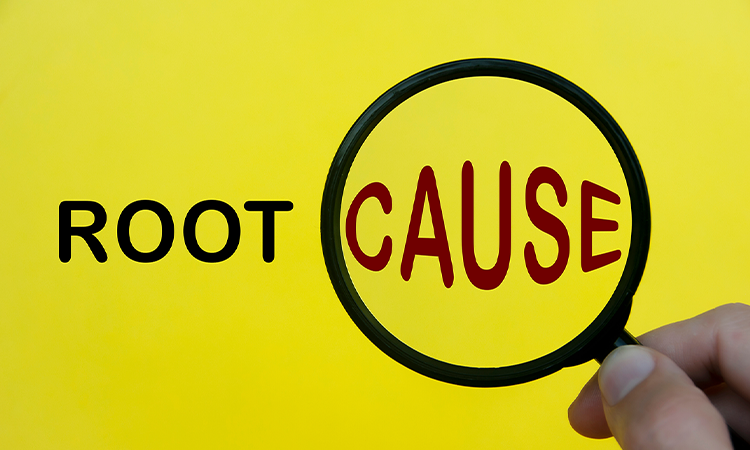
Fixing the crisis is not enough when it comes to effective online reputation crisis management. Because it is related to your brand reputation, which you’ve established throughout the year. It’s important to identify the root cause and try to resolve it completely. Otherwise, the crisis can occur again in the future and cause more damage to your online reputation.
Addressing the root causes can help you to –
- Improve your customer service, product, make adjustments in the service protocols, and investigate misconduct
- Implement necessary changes if the issue is related to customer feedback
- Highlight what you have done to resolve the issue
Step 7: Stay Consistent in Messaging

Consistency is the key!
While handling a brand reputation crisis, you must be consistent in messaging. People will trust you more when they get regular updates from your end. Lack of consistent messaging can showcase your ignorance towards the issue.
Your audience needs clarity; you should provide what you’ve promised. Maintain your consistency across all online platforms, even through internal updates. Mixed messaging can make your brand look unprofessional and untrustworthy.
- You must stay empathetic and focused on delivering the best possible solution.
- Your consumers must know that you’ve understood their concerns and are tirelessly working to fix things.
- Provide alternatives for your customers in case of a service outage.
- Keep people in the loop even if there is no noteworthy update from your end.
- Acknowledge people’s efforts to keep trust in your brand intact and show patience.
Step 8: Engage Stakeholders Effectively

Who matters to your business – your employees, customers, investors, and partners? You must maintain a positive relationship with these stakeholders.
The following are some tips to do this simply and effectively.
- As your team is the first point of communication with the consumers, you need to keep updated about what’s going on. You can share the updates through email and team meetings.
- You need to reassure your customers and investors in your business regarding the crisis. They need to have a clear idea of what you’re doing to fix the situation.
- Personalize your message, as not every stakeholder is looking for the same information. For instance, your customers want to know whether you’ll be able to offer them high-quality service, while your investors only care about their financial stability.
Clear messaging will help you effectively engage with your stakeholders and keep their trust in your brand capability intact.
Step 9: Manage Online Mentions and Reviews
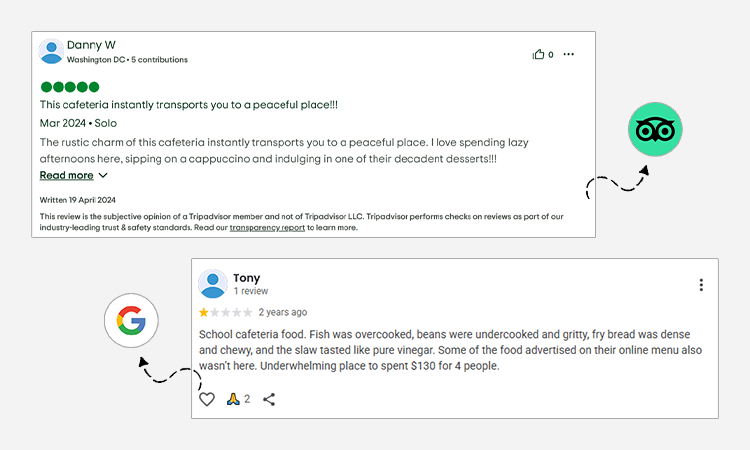
It is another crucial part of brand reputation management. As a business owner, you must know how to manage customer reviews, brand mentions, and comments effectively. This is not enough either; you need to professionally respond to the feedback and utilize positive reviews to rebuild trust.
- Use tools – You can use tools like Google Alerts, Mention, and Meltwater to track your brand mentions across the web, social media, and online forums.
- Track reviews – We suggest you regularly check review platforms like Google Business Profile, Yelp, and TripAdvisor to track your customer feedback.
- Prioritize social listening – Businesses need to monitor online conversations and public sentiment related to them on social media platforms. For this, they can track comments they’re getting on their social media accounts on Facebook, Instagram, and Twitter. It will help them to understand how and what people are talking about their brand.
- Respond to reviews – It’s important to acknowledge both positive and negative reviews. Interacting with the reviewers who’ve posted negative feedback about your brand helps you identify the areas for improvement.
- Encourage more reviews – You must send review requests to your satisfied clients and directly ask them to share their experience with your products and services.
Step 10: Rebuild Your Customer Trust

A crisis has occurred, you’ve handled it efficiently, you’ve mitigated the damage, but what’s next?
You need to rebuild your customer trust that got ruined during a crisis, and it requires more than just your words of promises. Your audience needs meaningful actions, transparency, and your willingness to learn from mistakes.
Here’s how you can achieve your customer trust.
- Take real actions
You must apologize to the audience if you’ve made any mistakes that caused them damage. But this is not enough, you need to fix the issue as well. For example, you need to improve the product quality and implement quality control measures in case of a product defect.
- Seek feedback
You can ask for feedback from your customers and request them to mention how you can improve the customer service. It will showcase how much you value your customers’ opinions. It will also help you identify your areas for improvement.
A 2018 Hubspot study has shown that 68% of consumers are more likely to pay more for products and services from a brand with a strong record of good customer service.
- Prioritize Transparency
You must share your brand values and policies with your customers to maintain transparency. It’s not recommended to make false promises to resolve the online reputation crisis.
Additionally, you can showcase positive feedback to build your brand credibility. We also suggest you promote positive content about your brand online, such as positive customer testimonials and success stories.
5 Possible Causes of Online Reputation Crisis
A crisis can arise from various situations and for different reasons!
And the result is the same – it generates a negative brand perception in the digital environment. Let’s know about the possible reasons for a reputation crisis. Once you understand the reasons, you can identify the crisis beforehand and take the necessary precautions to prevent the damage.
- Quality Issues and Deception in Advertising
If any of your products or services have defects or malfunctions, it is quite possible that they don’t meet customer expectations. People will leave negative reviews and comments online. The quality issue is a big thing, and you cannot avoid the repercussions!
For example, many companies exaggerate the benefits of their products and services in their advertisements. They add extra functionalities, make false promises, and even hide possible risks of using the product or service. When the reality doesn’t match the generated customer expectation, your customers may feel deceived and express their dissatisfaction online through negative reviews.
- Ethical or moral controversies
This is quite complex as well!
If your customers or consumers find your company’s decisions/actions immoral, unethical, and socially irresponsible, it can trigger a reputational crisis for your business. Now, the question comes: what can trigger such ethical controversies?
- If your employees and executives negatively post or comment on your brand’s digital assets
- If your company provokes a negative reaction from the users and they post something offensive, insensitive, and inappropriate about your business
- Conflicts with skateboarders and competitors
While running a business, you may have to deal with disagreements with your key stakeholders, such as customers, suppliers, or employees. It can lead to extreme online criticism, which can affect the public perception of your business.
Such conflicts may create a sense of revenge in your stakeholders. They may spread false or negative information about your business to destroy your online reputation. Even your competitors can spread such misinformation online about the quality of products/services you offer, your customer service, and other factors.
- Social Media Incidents
Social media plays a major role in making or breaking a brand’s reputation. Nowadays, everyone is glued to social media platforms like Facebook and Instagram to learn about different brands.
A Business Dasher study has claimed that on average, 93.79% of businesses use social media. However, many of them are not aware of the fact that certain social media incidents can cause an online reputation crisis for their brand.
Those incidents can quickly damage a brand’s online reputation if the company fails to address them appropriately before they escalate. Some examples of such social media incidents are:
- Negative viral social media posts
- Misunderstandings with the social media followers
- Boycott campaigns against your brand
- Mishandling a Small Crisis
Are you one of those who ignore little crises in your business?
If yes, then you must make one of the biggest mistakes that can cause your brand reputation crisis. You must know how to address negative online situations appropriately and transparently, even if they seem small to you. Even the smallest online crisis can become a full-blown scandal.
As a business owner, you must know how to deal with such issues, develop an impactful and tailored crisis management strategy, and maintain transparent online communication. It will help you minimize the impact of a potential reputational crisis.
5 Major Signs of Online Reputation Crisis
Do you know that a brand reputation crisis can come out of nowhere?
Sometimes, it may not give you any signs, sometimes it may. However, it’s difficult for businesses to notice these signs at the right time when there is any scope to prevent the damage. With the right tools and proper attention, you can identify those signs and act fast.
The following are five major signs of a brand reputation crisis. Having a clear idea of these can help you identify them earlier and take necessary precautions to prevent damage.
- Increase in Negative Reviews – When you start getting an increased number of 1-2 star reviews on Google or other review sites, it’s a sign of your potential brand reputation crisis. Identify words like ‘rude behavior’, ‘late’, ‘won’t recommend’, ‘won’t visit again’, or ‘unprofessional’.
- Negative Sentiment in Social Media – When your followers and others tag you on social media to complain about your products and services, consider it a sign. Additionally, your brand has got a problem if such complaints or posts start.
- Significant Drop in Customer Engagement or Sales – You may witness a significant drop in your customer engagement or sales. And trust us – it’s a sign! Your website traffic will slow down suddenly, no recipient will open your email, and even your loyal customers will disappear. Have a store? The number of store visits will shrink.
- Constant Social Media Trolling – Do people talk badly about your brand on social media? Do they troll your products or services on social media? Then your brand may become a victim of social media trolling. If you’re facing such social media incidents constantly, it’s a sign of a crisis.
- Negative News Circulation – Even a single negative blog post can go viral online and spread like wildfire. Such news articles can convey a negative image of your brand, especially if the news is associated with a data breach, poor customer service, or any other controversial issues.
Tools You Can Use to Detect the Early Signs of an Online Reputation Crisis
You can’t prevent the damage caused by an online reputation crisis if you don’t detect it earlier. The faster you spot a brand reputation crisis, the faster you can act.
But the question comes – how can you detect those early signs of a crisis as soon as it emerges?
There are a few useful tools that you can effectively utilize to detect the signs of a brand reputation crisis. Let’s learn more about these tools.
- Google Alerts
It’s a free tool from Google and quite simple for beginners. You need to set up alerts for the online mentions of your brand name and other related keywords. With this, you can identify negative news coverage, blog mentions, and industry site articles. However, it fails to spot review changes and social media complaints. You need a stronger brand protection tool if the crisis is severe.
- Mentions
It’s a comprehensive tool that you can use to track your online brand mentions. It sends you real-time alerts and helps you track hashtags related to your business. You can spot viral posts and understand how people feel through their real-time sentiment.
- Birdeye
It’s an online reputation management platform through which you can detect early signs of a crisis and monitor your customer feedback. You can also use this tool to track online reviews and social media mentions. With the right utilization of this tool, you can identify and address potential crises early before they escalate.
- Brand24
Businesses can use this tool to detect potential signs of reputational crisis and monitor their online mentions. They can identify the peculiarities in online mentions, such as volume and reach. It provides you with real-time alerts for negative mentions and allows you to respond quickly. With the appropriate utilization of this tool, you can reduce the impact of reputational damage.
- Talkwalker
A social intelligence platform that you can use for social media monitoring and analytics. Businesses can get essential data insights that are crucial to understanding their online presence and broader social media landscape. Want to analyze your competitor’s crisis management strategy? Talkwalker also offers an exceptional feature for competitive analysis.
Seems complex? If you want to utilize the highest potential of these tools to identify and manage potential brand reputation crises, you can seek online reputation monitoring services from a renowned agency.
Major Examples Of Brand Reputation Crisis
In this section, we will talk about some major examples of online reputation crises. These examples will help you understand the importance of good reputation management for your business. You can draw lessons from these incidents and avoid making the same mistakes.
Let’s explore some notable cases.
Example 1:
A crisis can cost a business millions! Sounds unbelievable?
Then, you may not be aware that Delta Air Lines had a major system failure in 2024, which caused more than 7,000 flight cancellations. And in the broad scenario, the company lost over $550 million, which significantly tarnished their brand reputation.
And this was not just a tech issue; it was a full-blown brand reputation crisis.
Example 2:
You must have heard about the news of Samsung’s Galaxy Note 7 catching fire due to battery defects. The model was launched in 2016 by introducing its unique features. Initially, the company attempted to resolve the issue, but ultimately issued a global recall and halted production of that specific device.
However, the company efficiently managed the crisis and regained its consumer trust by maintaining transparent communication and decisive actions.
Example 3:
And how can we forget about Nestle’s famous case of negative digital reputation? The case is associated with Greenpeace’s campaign against Nestle for its alleged contribution to deforestation and degradation of rainforests through the use of palm oil in its products.
Nestle was accused of contributing to environmental damage and threatening biodiversity. It started just when Nestle inappropriately responded to Greenpeace’s criticism on its Facebook page.
Instead of addressing concerns empathetically, the page administrator responded in a defensive manner, which led to more negative reactions from the online users. Even the news of boycotting Nestle online was spreading rapidly, that time. The company withdrew its initial response from social media and issued a public apology, pledging to take more responsible steps.
Conclusion
An online reputation crisis can occur at any time, often without any prior signs. Even a little online argument with your unsatisfied customers or rapidly spreading misinformation can adversely impact your brand reputation online. The only way to prevent reputation damage and mitigate the impact is to develop a robust crisis management strategy.
You can follow our comprehensive guide to brand reputation crisis management and implement the mentioned strategies to ensure success. You cannot wait for a crisis to happen. Thus, it’s better to prepare a strategy well in advance, so that you can effectively handle a crisis when it hits your business. You can also hire a reputable online reputation protection service provider to manage your brand crises.

